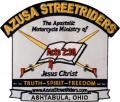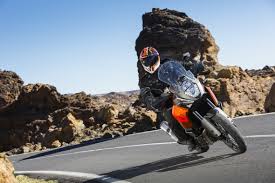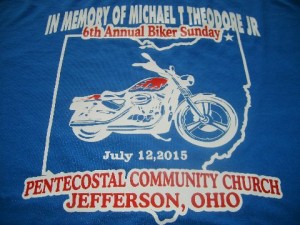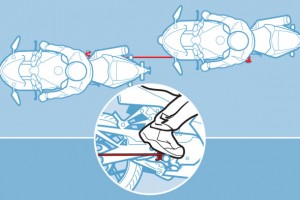We may not want to admit it, but winter is just around the corner. And as the air cools off and the snow starts falling, most of us riders store our bikes and impatiently wait for spring to ride again.
But storing your bike in the winter isn’t as simple as just throwing a cover over it and hopping in the car. In order to keep your motorcycle in top running condition, there is some work that needs to be done before storing it for several months (talk about adding insult to the injury of not being able to ride!)
However, if you properly get your bike ready for winter storage, it’ll make getting it running again when the riding season begins a whole lot easier, and prevent any unwanted surprises such as dead batteries, corrosion, and rust spots (or worse.)
Depending on what kind of motorcycle you ride there may be different things that will need to addressed. But there is some general wisdom on how to get it ready to be stored for the winter. Your main enemy during winter storage is damage from moisture, so most of our winterizing efforts will be aimed at keeping that away from your bike. In addition, well give some love to your fuel system, battery, tires, and all your moving parts as well.
With just a little prep work using these ten simple steps, you’ll save yourself a lot of time and hassle come spring time, and your bike will be ready to hit the road as soon as you are!
1) Surface Prep
Washing your bike when nobody will see it for a few months can be a drag, but giving your bike a thorough cleaning before storage is important; letting bug guts or water spots sit on your paint can corrode the finish permanently. Wash your bike and dry it completely to get all the moisture off the surfaces (an electric leaf blower is a great way to get all the nooks and crannies really dry.)
Add a coat of wax, which will act as a barrier against moisture and rust. Finally, spray exposed metal surface with WD-40 to displace all moisture (fun fact: the WD in “WD-40” stands for water displacement) and to give them a protective coating against corrosion.
2) Change Oil and Filter
Change your oil and filter. It’s better for your lubrication system to have fresh oil sitting in it for several months than to have used, broken down oil in it, not to mention the last thing you’ll want to do when riding season begins is change the oil before you can go ride. Using a winter weight oil like 5W30 can help it start up easier come spring time as well.
If you’re going to be storing your bike for a long time (4-6 months or more) you will want to protect your engine’s internals against moisture by coating them lightly with oil. You may not be able to see it with your naked eye, but the cold winter air is perfect for moisture to gather in your engine and cause rust to form on your pistons and cylinder walls.
In order to do this, remove the spark plugs and put a little squirt (about a tablespoon) of engine oil into the holes, then turn your engine over a few times to coat the cylinder walls by spinning the rear wheel with the bike in gear. Once everything is coated, replace the spark plugs.
3) Lube Moving Parts
Keeping moving parts lubed during the winter will help keep moisture from building up on them and causing any rusting or binding. Any part of your motorcycle that needs to be lubed at any point should be lubed again before storage. Some parts to check are: chain drive, cables, controls, fork surfaces, and any other pivot points.
4) Prep Fuel System
Gas tanks have a tendency to rust when not in use, and untreated pump gas breaks down and becomes gummy over time. To prevent rusting and make sure your fuel is ready to run after a few months in storage, you’ll want to fill your tank completely with fuel treated with a product like Sta-Bil Fuel Stabilizer Star brite Star Tron – Enzyme Fuel Treatment
On your last ride of the season, stop in at the gas station nearest to where you will be storing your bike and add the proper amount of fuel stabilizer, then top off the tank. A full tank will keep moisture from building up on the tank walls, and adding the stabilizer before the short ride home will help mix the gas and stabilizer together and run it through your fuel system before storage.
Note: Another method that some some do is to drain the tank and fuel system completely. This is more troublesome to do, and requires that you treat the inside of the tank with fogging oil to prevent rusting. This method may be preferred for very long-term storage (6 months or more), but for winter storage, a full tank of treated fuel is easier and completely safe to do for both carbureted and fuel-injected bikes.
5) Safeguard Battery
Batteries have a tendency to self-discharge when sitting over time, especially when they remain hooked up to the bike. The easiest way to combat this is to hook up a battery tender like the Battery Tender Super Smart Junior which uses smart technology to monitor the charge and keep the battery topped off without overcharging. Normally you should pull the battery from the bike for storage, but with a smart tender you can also connect the tender with the battery left in the bike. Before doing this, make sure the electrodes are clean and corrosion free; if necessary, clean them off and give them a light coating of grease.
6) Protect Tires
If your tires are left to sit in the same position all winter long, they could develop flat spots. Keeping the tires off of the ground will prevent this, so if you have motorcycle stands, put the bike up on them for storage. If you don’t have stands, try to get at least the rear tire off the ground, or you can rotate your tires by rolling your motorcycle slightly every few weeks. If you need to leave your tires down on concrete, put a piece of carpet or plywood under them to keep any moisture from seeping into them.
7) Check Coolant/Anti-freeze
If you’ll be storing your bike somewhere that gets below freezing, make sure you have adequate levels of anti-freeze in your coolant system. This is very important; if you run straight water in your coolant system and it freezes, you could come back to a cracked head in the spring!
8) Plug Out Pests
Mice and other rodents are notorious for hiding from the cold inside exhaust pipes and making homes out of air filters. In order to avoid any furry surprises when it’s time to ride again, plug up your pipes with an exhaust plug like the Muffler Plug. You can also simply stuff your air intake and the ends of your exhaust with some plastic bags – but do use bright colored bags or tie something to them so you don’t forget take them out when you fire up the bike!
9) Keep it Covered
With your motorcycle fully prepped for winter, invest in a proper motorcycle cover. A quality motorcycle cover will not only keep dust off the bike, but will keep the moisture out so it doesn’t get trapped underneath it, and create corrosion or rust. If you’re storing it outside, be sure to get a cover with tie downs to prevent it from blowing loose in wind. If you’re storing it inside you’re in much better shape, but you should still use a cover to prevent dust from building up on it.
10) Theft Protection
If you’re storing your bike outside, bear in mind that being parked unattended for months at a time makes it an easy target for theft. In addition to protecting your bike from weather, using a cover will conceal it from view, and securing it with a heavy lock and chain can give you some peace of mind. Make sure to add some sort of lock or alarm on your bike there are many different aftermarket alarms for bikes out there.
With your bike fully prepared for a few months of hibernation, you’ll find that the winter is the perfect time to get done any maintenance or upgrade projects that you’ve had on your mind. You may not be able to ride in the snow, but nothing is stopping you from getting your hands a little greasy and actually starting one of those projects that you’ve been thinking about all season!
Michael Theodore
National Road Captain


















